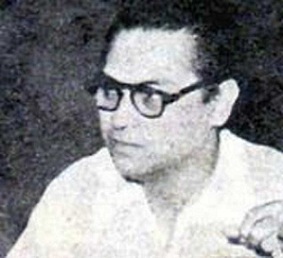Gyan Mukherjee

Gyan Mukherjee (30 September 1909 – 13 November 1956) was an Indian film director and screenwriter, who worked in Hindi cinema, best known for the hits Jhoola (1941) and Kismet (1943).
In 1943, he reused the formula of Geeta to direct the biggest hit of his career, Kismet (1943), which also add another formula of “lost-and-found”, which remained popular for several decades in Hindi films.[2] The film had Ashok Kumar, the leading star of the era, playing an anti-hero and also appearing in a double role. The film had a strong-anti British sentiment and also featured the noted patriotic song, “Door hato O Duniya walon, Hindustan Hamara Hai” (Leave People of World, India is Ours) by Kavi Pradeep,[3][4] and went on to run at Roxy Cinema in Calcutta for 3 years and 8 months.[5][6][7] Subhash K. Jha has called Kismet as one of the most influential films of all times” in Indian cinema.[8]
After death of Himanshu Rai, founder of Bombay Talkies Studio in 1940, a group led by producer Sashadhar Mukherjee along with production controller Rai Bahadur Chunilal,[9] actor Ashok Kumar and Mukherjee, broke away to establish the Filmistan studio in March 1943 at the premises of old Sharada Movietone studios in Goregaon, Mumbai.[10][11] He retouched the concept of anti-hero in Sangram (1950), today his works are seen as early depictions of the underworld and the anti-hero in Indian cinema.[2]
While working at Bombay Talkies, auteur Guru Dutt trained under him, though he also assisted Amiya Chakravarty, Dutt emulated Mukherjee’s formula-based film style in his early films and eventually dedicated his classic, Pyaasa (1957) to Mukherjee,[2][7] Another noted director, who assisted him at Bombay Talkies, was Shakti Samanta, who later made Aradhana (1969) and Amar Prem (1972).[12]
